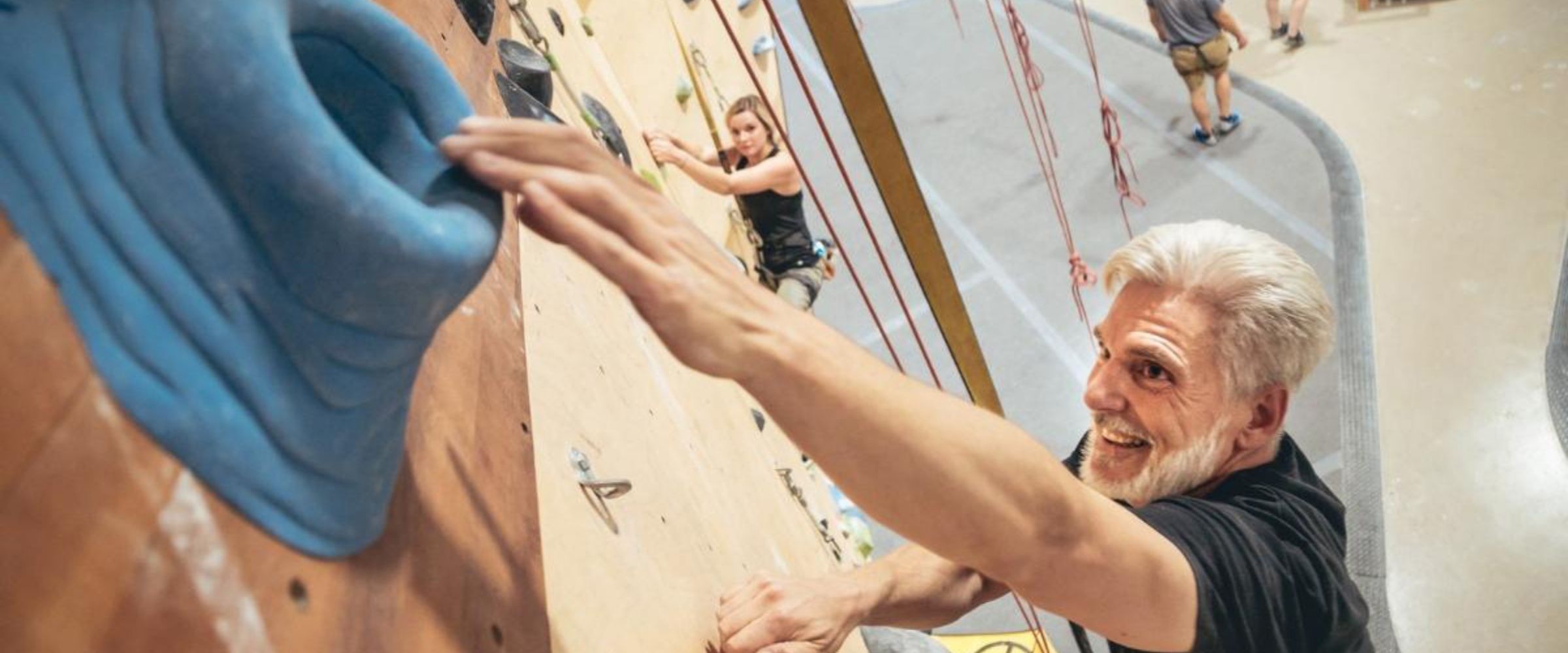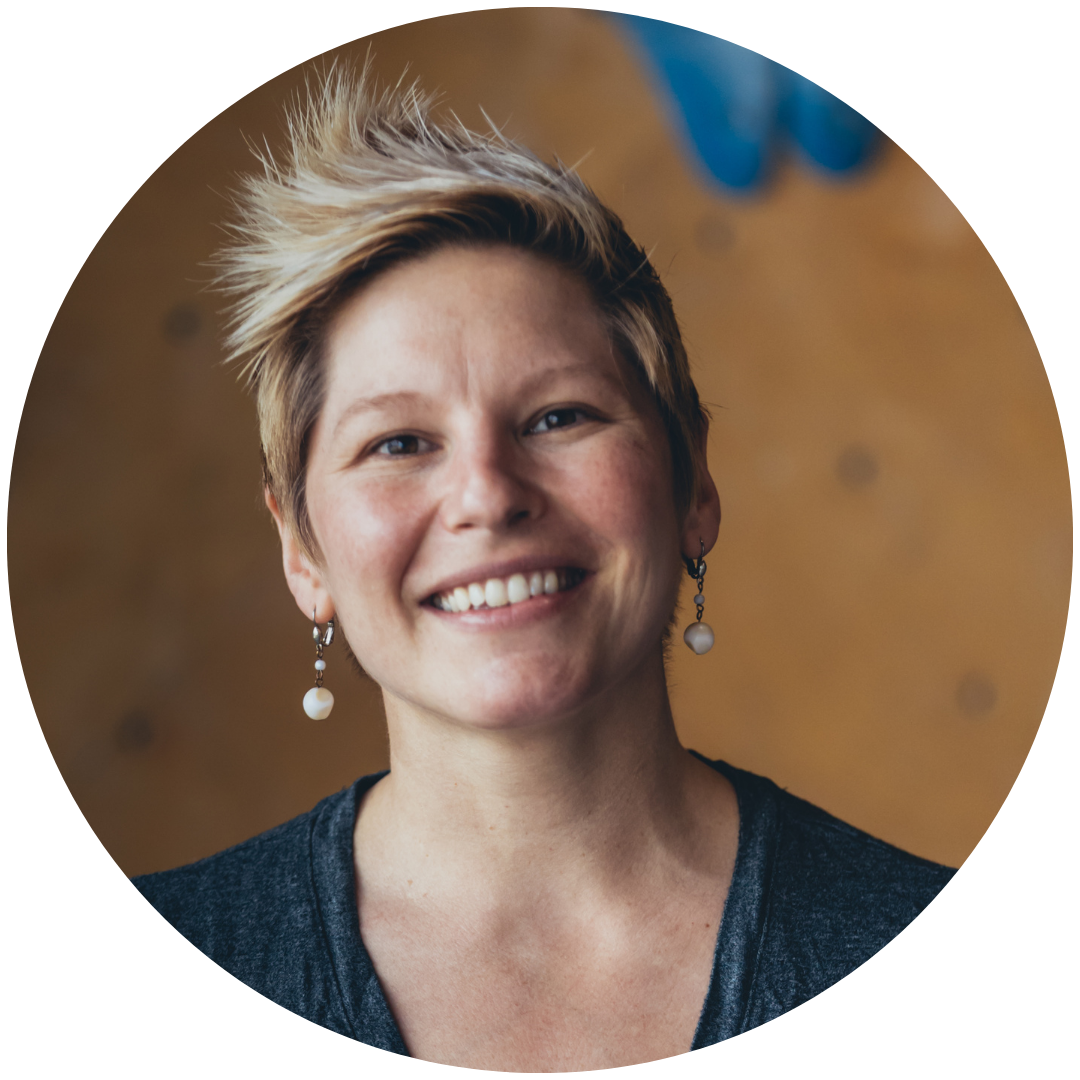How Coaches Can Apply LTAD to Every Generation
 Mike Meyers, 47, at The Crag Nashville. Photo by Kyle Somers.
Mike Meyers, 47, at The Crag Nashville. Photo by Kyle Somers.
Think all the way back to the ’90s when Spandex was neon, and everything was rad…or is that now? Chris Sharma and Lynn Hill were shining a spotlight on the sport, gyms were starting to pop up, and climbing was becoming more accessible. These gyms were a big kid’s paradise. Communities came together to help build and set, and a new generation of climbers was born.
For those of us interested in building community and developing programming, there is Canada’s “Long-Term Athlete Development” or LTAD. This is a document of comprehensive research that provides an approachable framework for developing athletes throughout early life - physically, technically, and mentally - and breaks training into higher-level steps, called Stages. For both a recreational and a competitive approach to climbing, LTAD helps facilitators focus on developing physical capabilities for different age groups as well as mental strength. Let’s explore the values of Millennial, X, and Boomer generations of climbers through the lens of LTAD Stages 6,7, and 8 - and how we can best build programming for them.
Millennial Climbers: 1981 to 1996
Millennial climbers value creativity and are goal-oriented. Climbers in this generation may want to volunteer or even transition into a coaching position! LTAD Stage 6 recommends focusing on developing strength and power, and mentally facilitating improvisation with technical skills like dynamic movement recovery.
Our Millennial representative, Jay Traver, 32, began climbing on the high school team 16 years ago in Knoxville, TN. “We didn’t have a lot of structure on the high school team,” he said. He began pushing his limits outdoors and now uses both gym locations. One place has an old-school community vibe, and the other has a great training facility.
“My ideal program would include projecting, high tension drills, weightlifting, hangboarding, and yoga.”
Jay continues to learn from seasoned climbers, mentor new climbers, and spend as much time climbing outdoors as possible. The continuous challenge of becoming his best is what keeps Jay coming back for more.
Generation X: 1965 to 1980
I had the pleasure of speaking with several climbers in Generation X and LTAD Stage 7. This generation values community and consistency. Stage 7 explores stabilization motion; think body positioning on dihedrals, aretes, slabs, and roofs.
Representing Gen. X, my climbing partner, Sammie Baughman, 40, began climbing indoors nearly 20 years ago! “Climbing with a group of parents during my kid’s practice would be ideal...it’s nice to hang with other parents and find time for myself,” Baughman said.
Facilitating a “parents climb session” would take minimal effort on our part as gym staff and provide a much-needed sense of community for our league parents.
Adam Abraham, 50, began climbing outdoors with his climbing mentor in the ‘90’s. Adam now loves to share climbing outdoors with his daughter, and now mentors newer climbers in his generation including Jared Nordman, 43, and Ladd Watts, 47. “ We...bonded over being the 'old guys' in the gym,” says Abraham. They love the mental and physical challenges of climbing and value being a part of the community.
This generational market has the desire, ability, and income. Let’s provide them the support, attention, and programming. A social group with coaching that integrates fitness, balance, and stretching as well as training on dihedrals, roofs, and overhangs during youth programming meets the need for community and fitness. Perhaps a semester-long family membership with programming and an outdoor trip would allow parents and children to enjoy the love of climbing together. If you build it, they will come.

Boomers: 1946 to 1964
Ok Boomers, let’s climb! Generally, this generation values certifications, an active lifestyle, and recreation. LTAD Stage 8 emphasizes being a part of a community. John Baltz, 57, began climbing in the Pacific Northwest 10 years ago. John loves everything outdoors and shares his passion with his daughter, Tristan. When he and his family moved to the Nashville area, he was intentional about finding a community and taking instruction. “The community is what we found more than anything… getting involved in the classes really helped us as well.”
“Have all four facets of climbing at the same time; yoga, strength, strategy, and fitness, and just climbing together to round it out... it helped us get to know everyone, too.”
He said that one obstacle for his generation is wondering where to start. He suggested offering regular indoor climbing meetups for beginners with an instructor would be ideal for beginners in his generation.
After taking the time to sit down and talk with generational representatives I realized how much insight they had to offer. Although the focus of climbing changes with age, our need for the community remains. We all value learning from each other and teaching what we have to offer. We all need to feel valued and know we belong. Over and over I heard about the importance of mentoring and community.
The following are several ways we can foster community in our gyms:
- Adult training leagues (after work hours or a weekend afternoon)
- Parents' climb time during youth programming
- Beginner meetups
- Partnering with civic organizations, like Touchstone Climbing working with Big Brother/Big Sisters. Reach out to the community nonprofits in your area to see what opportunities may exist.
Want more professional development to help you improve your gym's programming? Register for the 2022 CWA Summit and attend the Program Management track, including the Progressive Programming Workshop!
LEARN MORE
About the Author
 Hailey Caissie is the Programs Manager at The Crag Climbing Gym in Nashville, Tennessee. Hailey has been a climbing instructor since 2006 and loves seeing new climbers discover their abilities. She finds it especially fulfilling to coach young athletes toward discovering their potential. She works to inspire generations of climbers to become more intentional, influential, and inclusive.
Hailey Caissie is the Programs Manager at The Crag Climbing Gym in Nashville, Tennessee. Hailey has been a climbing instructor since 2006 and loves seeing new climbers discover their abilities. She finds it especially fulfilling to coach young athletes toward discovering their potential. She works to inspire generations of climbers to become more intentional, influential, and inclusive.
